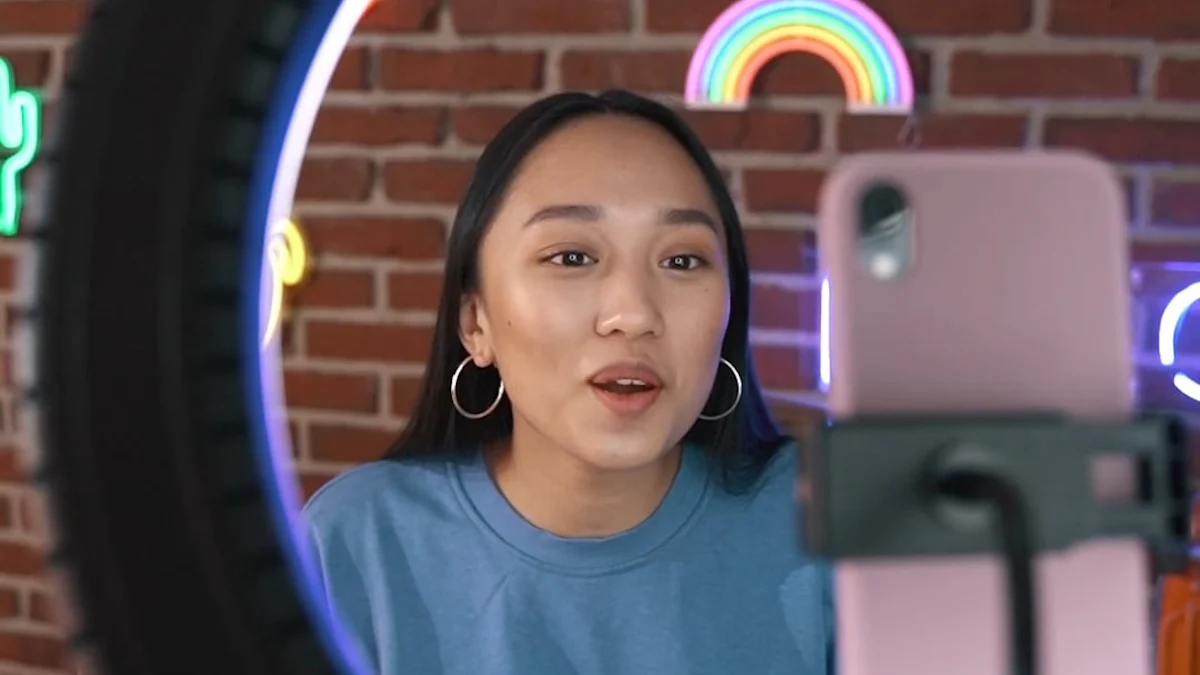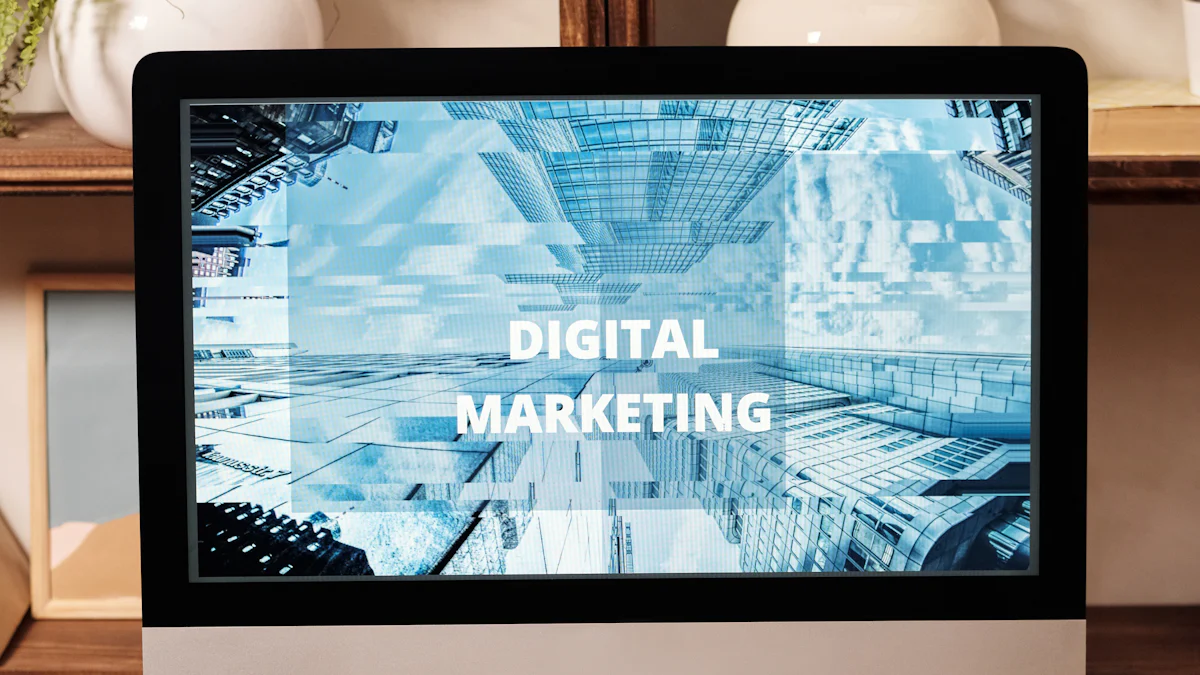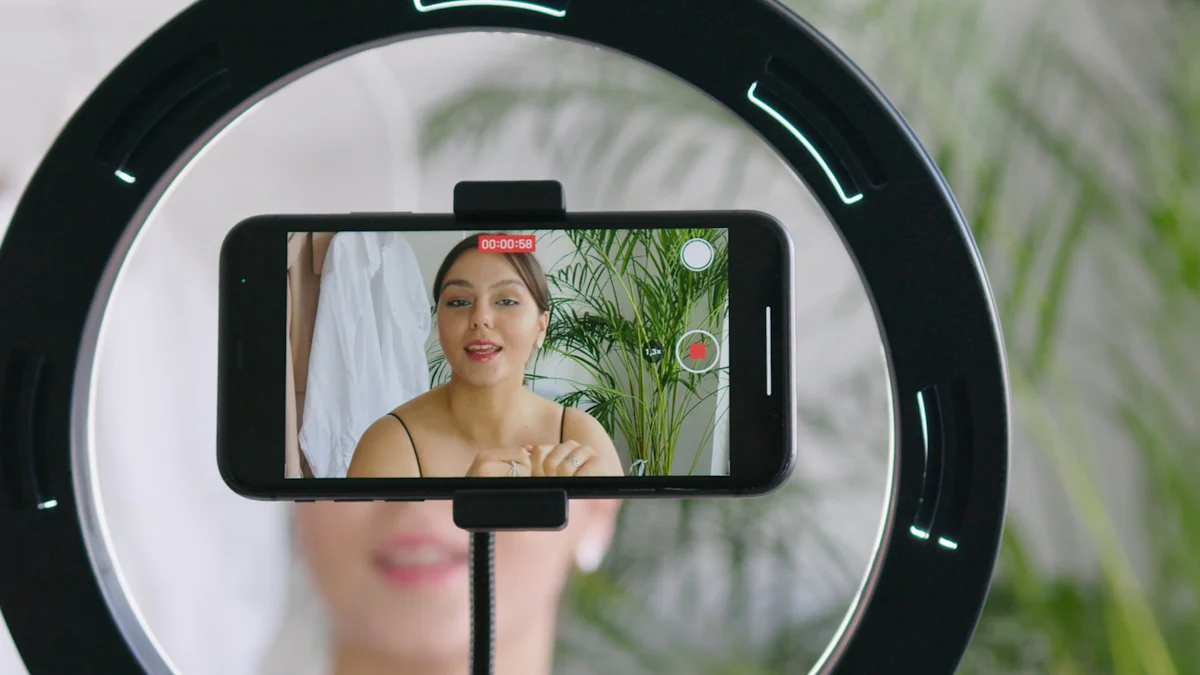Top Influencer Marketing Sites Reviewed by Users in 2025

Influencer marketing has become a powerhouse in 2025, driving authentic connections between brands and consumers. With the industry projected to hit $24 billion by the end of 2024, it’s clear that businesses are investing heavily in this strategy. But how do you choose the right platform? That’s where user reviews come in. They reveal the strengths and weaknesses of influencer marketing sites, helping you make smarter decisions. Whether it’s understanding customer service or gauging platform features, reviews give you the clarity you need to succeed in this fast-evolving space.
What Are Influencer Marketing Platforms?
Definition and Purpose
You’ve probably heard the term "influencer marketing platforms," but what exactly are they? These platforms are digital tools designed to connect brands like yours with social media influencers. They act as a bridge, helping you find the right creators to promote your products or services. Beyond just connecting you with influencers, these platforms simplify the entire process of running campaigns. From managing contracts to tracking performance, they handle the nitty-gritty details so you can focus on building relationships and driving results.
Think of them as your all-in-one solution for influencer marketing. They help you discover influencers, manage communication, and even track your influencer marketing ROI. With features like campaign management tools and analytics, these platforms make it easier to measure success and refine your strategies.
Key Benefits for Businesses
Streamlining Influencer Discovery
Finding the perfect influencer can feel like searching for a needle in a haystack. Influencer marketing platforms make this process a breeze. They provide searchable databases filled with influencers across various niches. You can filter by audience size, engagement rate, or even location. This saves you time and ensures you’re connecting with creators who align with your brand.
Managing Campaigns Efficiently
Running a campaign involves juggling a lot of moving parts. These platforms centralize everything, from contracts to content approvals. You can manage multiple campaigns at once without feeling overwhelmed. Plus, they often include tools for scheduling posts and tracking deadlines, keeping everything on track.
Tracking Performance and ROI
How do you know if your campaign is working? Influencer marketing platforms provide detailed analytics to help you measure success. You can track metrics like engagement, clicks, and conversions. This data shows you what’s working and what needs improvement, ensuring you get the most out of your investment.
"An influencer marketing platform is a digital tool or service that connects businesses and brands with social media influencers to create and manage influencer marketing campaigns."
Why They Are Essential in 2025
In 2025, these platforms are more important than ever. The influencer marketing industry is booming, with a projected market value of $24 billion by the end of 2024. This growth shows how much brands rely on influencer-driven strategies. Platforms help you stay competitive by offering tools that foster long-term partnerships with influencers. These relationships build trust and loyalty, keeping your brand top-of-mind for consumers.
As technology evolves, these platforms adapt to meet new challenges. They help you navigate changing consumer preferences and regulations, ensuring your campaigns remain effective. In a world where authentic engagement drives success, influencer marketing platforms are your secret weapon.
Top Influencer Marketing Platforms in 2025

Heepsy
Key Features
Heepsy stands out with its massive database of millions of influencers, updated regularly to ensure accuracy. You can use advanced search filters to narrow down influencers by audience size, engagement rate, or even location. It also offers analytics tools to help you understand audience demographics and engagement metrics. Plus, integrated payment processing makes transactions with influencers seamless.
Customer Reviews and Testimonials
Users love Heepsy for its simplicity and depth. Many highlight how the platform’s detailed insights make it easier to choose influencers who align with their brand. One user mentioned, “Heepsy’s search filters saved me hours of work. I found the perfect influencer in minutes!”
Pros and Cons
Pros:
- Extensive influencer database.
- Advanced search and analytics tools.
- Easy payment processing.
Cons:
- Limited free features.
- Some users report occasional delays in database updates.
Afluencer
Key Features
Afluencer is unique because it’s the only completely free influencer marketing platform. It offers scalable solutions, so you can upgrade to paid versions as your business grows. The platform provides tailored matches to connect you with influencers who align with your brand’s values. It’s also budget-friendly, making it ideal for small businesses. Expert support is available to help you optimize campaigns.
Customer Reviews and Testimonials
“The team at Afluencer is amazing! They break down everything so it’s easy to understand.” – Yesenia
“The filtering options are top-notch. I found influencers by niche, location, and even compensation type.” – Rock S.
“Afluencer’s database is huge. It made finding the right influencers a breeze.” – Marco
Pros and Cons
Pros:
- Free to use with scalable paid options.
- Excellent customer support.
- Advanced filtering for influencer discovery.
Cons:
- Limited features in the free version.
- Smaller database compared to competitors.
Tribe Dynamics
Key Features
Tribe Dynamics excels in analytics. It offers tools to measure campaign performance, track influencer engagement, and assess content impact. The platform is versatile, catering to industries like beauty, fashion, and retail. Its focus on data-driven insights helps you refine your strategies for better results.
Customer Reviews and Testimonials
Users appreciate Tribe Dynamics for its robust analytics. One reviewer shared, “The insights I got from Tribe Dynamics helped me understand what was working and what wasn’t. It’s a game-changer!”
Pros and Cons
Pros:
- Advanced analytics for performance tracking.
- Suitable for multiple industries.
- Helps optimize campaigns with actionable insights.
Cons:
- Steeper learning curve for beginners.
- Higher pricing compared to other platforms.
Upfluence
Key Features
Upfluence is a powerhouse among influencer marketing platforms, offering a suite of tools that simplify your campaigns. Here’s a quick look at what makes it stand out:
| Feature | Description |
|---|---|
| Influencer Search | Access millions of influencers across major social media platforms with detailed filtering options. |
| Analyze Influencer | View profiles, engagement rates, and follower demographics. |
| Workflow and Outreach | Send personalized messages using a built-in ChatGPT assistant, integrated with Gmail and Outlook. |
| Influencer Gifting | Offer gifts to influencers directly from your e-commerce site with real-time updates. |
| Payments | Integrated with Stripe and PayPal for seamless payments to creators in over 120 countries. |
These features make Upfluence a go-to choice for brands looking to streamline their influencer marketing efforts.
Customer Reviews and Testimonials
What do users think about Upfluence? Here’s what they’re saying:
- Many love the extensive influencer database and real-time performance tracking.
- The reporting tools are intuitive and easy to use.
- Customer support gets high praise for being quick and responsive.
However, not everyone is thrilled. Some users have raised concerns about rigid contractual terms and billing practices. A few felt trapped in a service that didn’t meet their expectations.
Pros and Cons
Pros:
- Comprehensive influencer database.
- Advanced analytics and reporting tools.
- Built-in outreach tools with AI assistance.
Cons:
- Some users report dissatisfaction with contractual terms.
- Pricing may be steep for smaller businesses.
Aspire
Key Features
Aspire is another top contender among influencer marketing platforms, offering tools that cater to brands of all sizes. Here’s what you can expect:
| Feature | Description |
|---|---|
| Influencer Search | Easily find influencers that match your brand using filters like audience type and engagement. |
| Creator Marketplace | Post campaign details for influencers to apply, helping discover new talent. |
| Campaign Management | Manage all aspects of influencer campaigns, from planning to tracking progress. |
| Content Management | Organize and review influencer-created content to ensure it meets brand standards. |
| Sales Generation | Connect influencer marketing to sales platforms to track campaign effectiveness. |
Aspire’s focus on connecting brands with the right creators makes it one of the best influencer marketing platforms in 2025.
Customer Reviews and Testimonials
Users rave about Aspire’s user-friendly interface and robust campaign management tools. One reviewer shared, “Aspire made it so easy to find influencers who truly align with our brand values.” Another noted, “The Creator Marketplace is a game-changer for discovering fresh talent.”
On the downside, some users feel the platform could improve its integration with third-party tools. A few also mentioned that the pricing might not suit smaller businesses.
Pros and Cons
Pros:
- Excellent tools for campaign and content management.
- Creator Marketplace simplifies influencer discovery.
- Strong focus on sales tracking and ROI.
Cons:
- Limited third-party integrations.
- Pricing may not be ideal for startups.
How to Choose the Right Influencer Marketing Platform
Choosing the right influencer marketing platform can feel overwhelming, but breaking it down into steps makes it manageable. Here’s how you can find the perfect fit for your business.
Define Your Goals
Before diving into influencer marketing platforms, you need to know what you want to achieve. Clear goals will guide your decision and help you pick a platform that aligns with your needs.
Brand Awareness
If your goal is to get your name out there, look for platforms with large influencer databases. These platforms should offer tools to connect you with creators who have high engagement rates and broad reach. This ensures your brand gets noticed by the right audience.
Sales and Conversions
For driving sales, focus on platforms that track ROI and conversions. Features like affiliate links or sales tracking integrations can help you measure how much revenue your campaign generates. Platforms with strong analytics tools are a must here.
Niche Targeting
If you’re targeting a specific audience, choose platforms with advanced filtering options. You’ll want to narrow down influencers by niche, location, or even audience demographics. This ensures your message reaches the people who matter most.
Pro Tip: Write down your goals and prioritize them. This will make it easier to compare platforms and find the one that fits your strategy.
Consider Pricing and Budget
Budget plays a big role in your decision. Influencer marketing platforms vary widely in cost, so you’ll need to balance features with affordability.
- Start by defining your campaign budget.
- Look for platforms that offer flexible pricing models, like pay-as-you-go or subscription plans.
- Factor in additional costs, such as influencer fees or exclusivity agreements.
- Don’t forget operational expenses, like content creation or campaign management.
Some platforms, like Afluencer, offer free versions, which are great for small businesses. Others, like Upfluence, may have higher costs but provide advanced features. Always calculate your potential ROI to ensure the investment makes sense.
Evaluate Customer Reviews and Testimonials
Customer reviews and testimonials are your secret weapon when choosing a platform. They give you real insights into what works and what doesn’t. Look for reviews that mention ease of use, customer support, and feature reliability.
For example, many users praise Aspire for its user-friendly interface and campaign management tools. On the other hand, some reviews highlight issues with pricing or integrations. Reading these firsthand experiences helps you avoid surprises and pick a platform that meets your expectations.
Note: Don’t just focus on positive reviews. Negative feedback can reveal potential deal-breakers or areas where a platform might fall short.
By defining your goals, setting a budget, and reading customer reviews and testimonials, you’ll be well on your way to finding the best influencer marketing platforms for your business.
Assess Platform Features and Usability
When choosing influencer marketing platforms, you need to dig into their features and usability. A platform might look great on the surface, but does it actually meet your needs? Let’s break down what to look for.
Start by checking if the platform offers advanced testing tools. These tools help you gather actionable insights and refine your campaigns. Some platforms even allow localized testing in your target language, which is a huge plus if you’re working in specific markets. You’ll also want to see if the platform can recruit influencers who match your audience. This ensures your campaigns hit the right people.
Collaboration features are another big deal. Platforms that let your team share access and work together seamlessly save you time and headaches. Look for integrations with tools you already use, like Slack or Google Workspace. This makes managing campaigns much easier. Don’t forget about report sharing and export options. These features let you present campaign results to stakeholders without extra hassle.
Here’s a quick list of must-have features:
- Advanced testing for better insights.
- Localized testing in your business language.
- Targeted influencer recruitment.
- Team collaboration and shared access.
- Integration with communication tools.
- Easy report sharing and exporting.
- Flexible pricing and usage plans.
- Tools for detailed feedback.
Of course, no platform is perfect. Many businesses face challenges like influencer fraud, ROI measurement, and campaign automation. Here’s a snapshot of common issues:
| Challenge | Details |
|---|---|
| Influencer Fraud | 50% of marketers struggle with fake followers. |
| ROI Measurement | Measuring ROI remains a top concern for brands. |
| Campaign Automation | 67% of marketers find it hard to identify the right influencers. |
By focusing on features and usability, you’ll find influencer marketing platforms that truly work for your business. Don’t settle for less—your campaigns deserve the best tools available.
Best Practices for Using Influencer Marketing Platforms

Build Strong Relationships with Influencers
Building strong relationships with influencers is the foundation of a successful influencer marketing strategy. You can’t just treat influencers as tools for promotion. Instead, focus on creating genuine connections. Here’s how you can do it:
- Show real interest in their content. Engage with their posts by liking, commenting, or sharing.
- Build relationships based on mutual respect and shared values. This creates trust and makes collaborations more meaningful.
- Communicate openly. Set clear expectations from the start and keep the conversation going throughout the campaign.
When you invest in these relationships, influencers are more likely to go the extra mile for your brand. They’ll feel valued, and that will reflect in the quality of their work.
Set Clear Campaign Objectives
Before you dive into influencer marketing platforms, take a moment to define your goals. Clear objectives give your campaign direction and purpose. They also help you choose the right influencers and strategies.
To set effective goals, follow these steps:
- Specific: Be clear about what you want. For example, instead of saying “increase sales,” specify the type of sales and the target amount.
- Measurable: Use numbers to track success. Decide how much engagement or revenue you want to achieve.
- Achievable: Keep your goals realistic based on your resources and timeline.
- Relevant: Align your goals with your overall business objectives.
- Time-bound: Set a deadline to keep yourself accountable.
Clear goals also improve communication with influencers. When everyone knows what success looks like, it’s easier to work together and achieve great results.
Monitor and Optimize Campaign Performance
Once your campaign is live, don’t just sit back and relax. Monitoring performance is key to getting the most out of influencer marketing platforms. Use the analytics tools provided by these platforms to track metrics like engagement, clicks, and conversions.
Pay attention to what’s working and what’s not. If an influencer’s content isn’t performing as expected, adjust your strategy. Maybe the messaging needs tweaking, or the timing isn’t right.
Optimization doesn’t stop there. Use the data you collect to improve future campaigns. For example, if you notice that a certain type of content drives more engagement, focus on that in your next campaign.
By staying proactive, you’ll maximize your ROI and keep your influencer marketing strategy on point.
Leverage Analytics for Future Campaigns
Analytics can transform your influencer marketing campaigns from good to great. By diving into the data, you’ll uncover what works and what doesn’t, helping you refine your strategies for the future. Let’s explore how you can leverage analytics effectively.
-
Use AI Tools for Smarter Insights
AI-powered tools are game-changers for influencer marketing platforms. They analyze performance metrics like click-through rates, engagement rates, and conversions. These insights help you identify top-performing influencers and predict future trends. With AI, you can also discover micro-influencers who resonate with niche audiences, giving your campaigns a more targeted reach. -
Set Measurable Goals Based on Data
Data isn’t just for tracking—it’s for planning too. Use analytics to set clear, measurable goals for your next campaign. For example, if your last campaign showed high engagement but low conversions, focus on strategies that drive sales. Predictive insights from influencer marketing platforms can guide you in setting realistic benchmarks. -
Refine Strategies Continuously
Don’t wait until a campaign ends to make adjustments. Real-time analytics dashboards on influencer marketing platforms let you monitor performance as it happens. If something isn’t working, tweak it. Maybe an influencer’s audience isn’t engaging with your content, or the timing of posts needs adjustment. Continuous refinement ensures you’re always optimizing for success.
Pro Tip: Use UTM parameters to track traffic and conversions directly linked to your campaigns. Combine this with feedback from customers to get a full picture of your campaign’s impact.
- Leverage Social Media Analytics
Social media platforms offer native tools to track reach, engagement, and audience demographics. Pair these insights with the data from your influencer marketing platforms for a comprehensive view. This dual approach helps you understand how your campaigns perform across different channels.
By using analytics effectively, you’ll not only improve your ROI but also build a stronger foundation for future campaigns. The more you learn from your data, the better your results will be.
As we step into 2025, influencer marketing platforms have become indispensable tools for businesses. They offer innovative features that simplify influencer discovery, campaign management, and analytics. These platforms are essential for building effective partnerships and achieving measurable results. With brands projected to invest $9.29 billion in influencer marketing, choosing the right platform is more critical than ever.
Customer reviews and testimonials play a huge role in this decision. They provide unbiased insights, helping you understand what works best for others with similar needs. Reviews also build trust, giving you confidence in your choice.
To find the best influencer marketing platforms for your business, focus on your goals. Use data analytics to refine your strategies and ensure alignment with your marketing efforts. By doing so, you’ll maximize ROI and create campaigns that truly resonate with your audience.
Ready to take your influencer marketing to the next level? Explore platforms that match your business needs and start building impactful campaigns today!
FAQ
What is the best influencer marketing platform for small businesses?
It depends on your needs, but Afluencer is a great choice. It offers a free version and scalable paid options. You can find influencers by niche, location, or compensation type. Plus, it’s budget-friendly and easy to use.
How do I measure ROI from influencer marketing campaigns?
Use analytics tools provided by platforms like Upfluence or Aspire. Track metrics like clicks, conversions, and sales. Pair this data with UTM parameters to see how much revenue your campaign generates. Always compare results to your initial goals.
Can I use these platforms for niche targeting?
Absolutely! Most platforms, like Heepsy and Aspire, offer advanced filters. You can search for influencers by audience demographics, location, or interests. This ensures your campaigns reach the right people and resonate with your target audience.
Are influencer marketing platforms beginner-friendly?
Yes, many platforms cater to beginners. For example, Afluencer and Aspire have user-friendly interfaces and excellent customer support. They guide you through influencer discovery, campaign setup, and performance tracking, making it easy to get started.
Do these platforms help with influencer fraud?
Yes, most platforms have tools to detect fake followers and engagement. Tribe Dynamics and Upfluence, for instance, provide detailed analytics to verify influencer authenticity. Always review influencer profiles and engagement metrics before collaborating.
Tip: Look for platforms with fraud detection features to protect your investment.
See Also
15 Essential Influencer Marketing Platforms for 2024
Key Influencer Marketing Trends to Follow in 2024
10 Budget-Friendly Influencer Marketing Platforms for 2024
Best Influencer Marketing Platforms for E-commerce Growth
20 Crucial Influencer Marketing Statistics Every Marketer Needs
